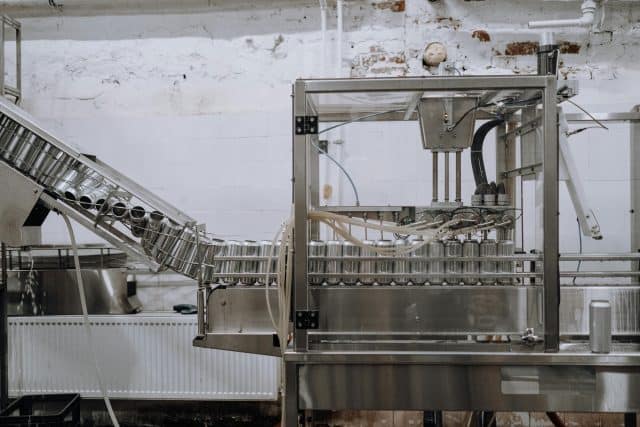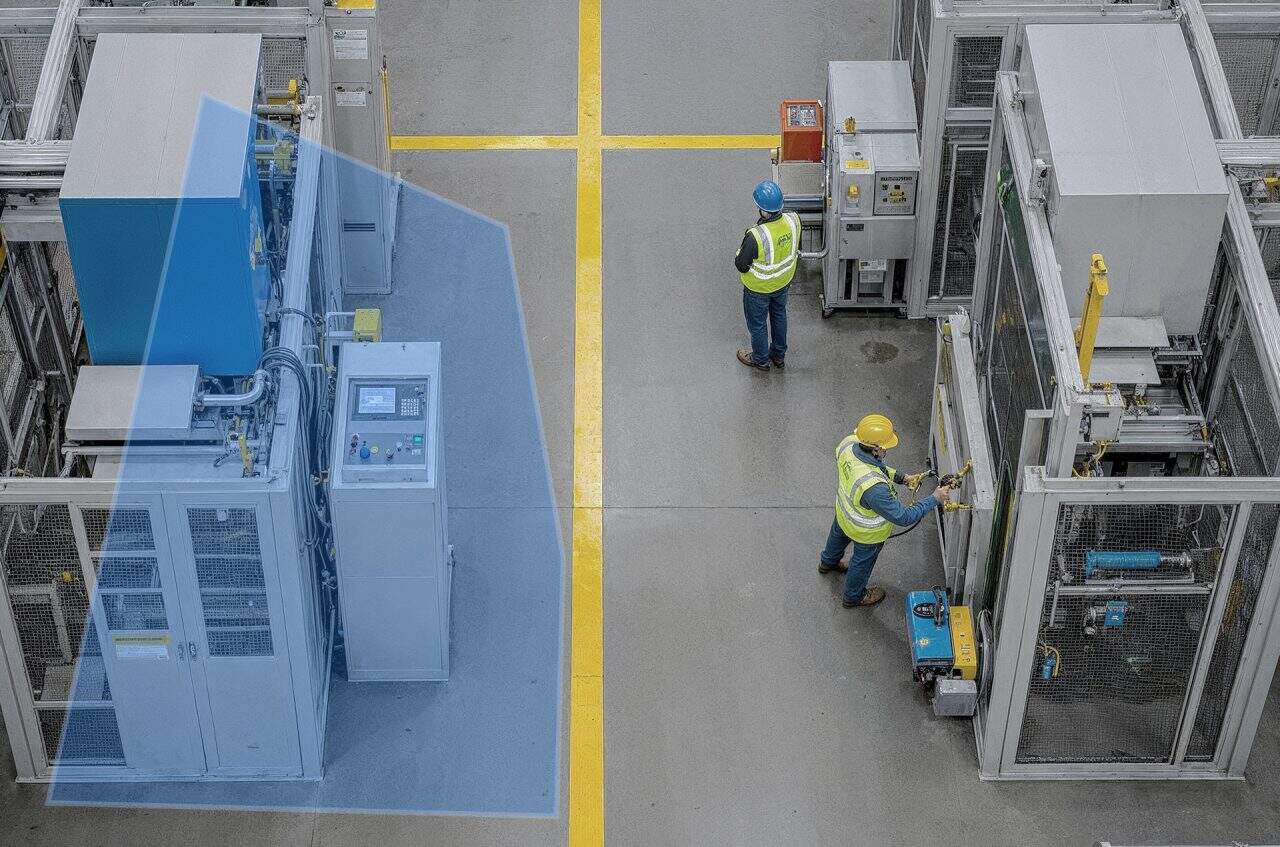Workplace safety in industrial environments depends on two fundamentals: machines should only operate under direct supervision, and workers should only be present where they’re trained, equipped, and authorized to be. When either of these rules is broken, the risk of injury or unplanned downtime increases dramatically.
Yet in large or high-throughput facilities, these risks often go unnoticed. Machines may run unattended after a shift change, or workers may cross into active equipment areas to save time. Without real-time visibility, small violations can snowball into major safety incidents.
Ghost machine and out-of-position operator detection provides a proactive safety net using computer vision. It continuously monitors people and machines, ensuring that each is where they are supposed to be: no more, no less.
What the system detects
Unmanned operation: A machine is running without an assigned operator nearby.
Out-of-zone operator: A worker enters or works within a zone they are not assigned to.
The system creates a time-stamped log and can trigger alerts instantly to prevent escalation.

Key operational metric
Out-of-position incidents/day: Each detected event highlights a potential violation of zone discipline or supervision protocol.
Detection value: Up to $20,000 per potential injury avoided, factoring in medical costs, downtime, and legal exposure.
How the system works
- Zone definition: Digital work zones are mapped for both operator areas and equipment operating envelopes.
- Operator monitoring: Computer vision recognizes people and matches them to assigned zones or roles.
- Machine activity detection: The system detects equipment movement, active cycles, or vibration patterns.
- Violation alerts: When a machine runs without an operator present, or when a person is out of their zone, an alert is sent immediately.
- Audit trail: All events are recorded for compliance, incident investigation, and safety coaching.
The system enhances existing signage, badges, or safety sensors by adding visual verification at scale.
Industry use cases
Metal fabrication: Detect active press brakes, welders, or shears operating without operator oversight.
Warehouse and logistics: Identify unauthorized entry into forklift travel paths or conveyor zones.
Chemical processing: Monitor cleanroom or restricted zones where PPE and training are required.
Construction and field operations: Track movement near cranes, lifts, or powered tools during active operation.

Business benefits
- Prevent injuries and fatalities: Intervene before violations escalate into serious safety incidents.
- Enhance safety culture: Reinforce boundaries with automated visibility and zero-blame alerts.
- Ensure training and zone discipline: Validate that only trained, approved personnel are operating equipment in the right areas.
- Support safety audits and certifications: Provide objective documentation of compliance and incident prevention.
- Reduce downtime from human error: Prevent incidents that cause equipment shutdowns or investigations.
Privacy and integration
The system can operate with anonymized silhouette detection—no facial or identity tracking needed. It integrates with safety dashboards, access control logs, and incident response systems.
Automating safety oversight
Visual safety violations often go unseen until after an event. Ghost machine and out-of-position operator detection brings these risks into view in real time.
It enables safety teams to act before injuries happen and builds a proactive, high-compliance operational culture.
